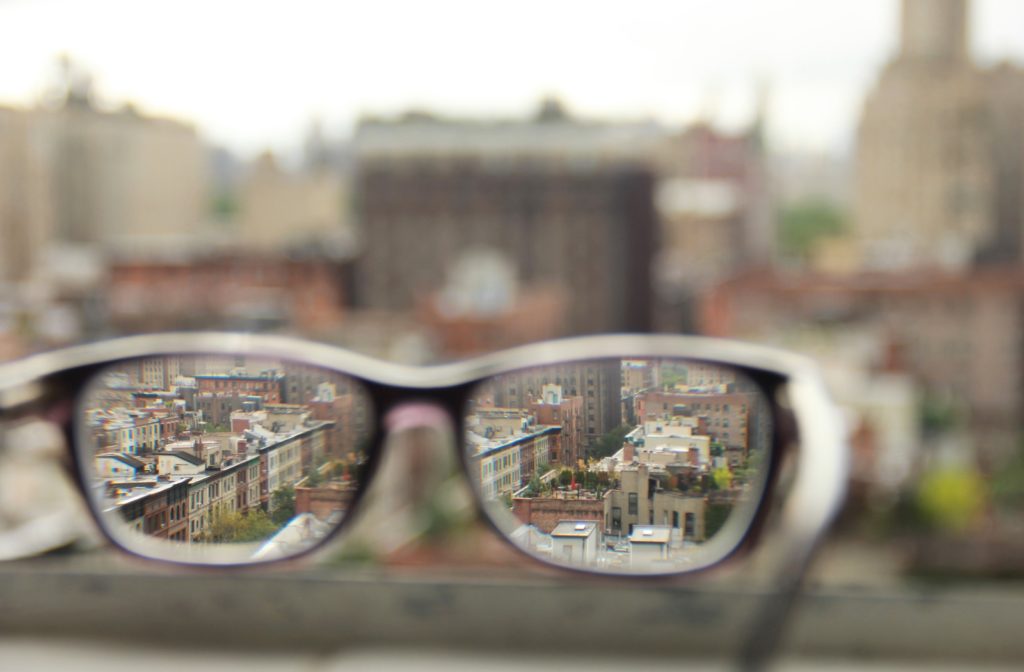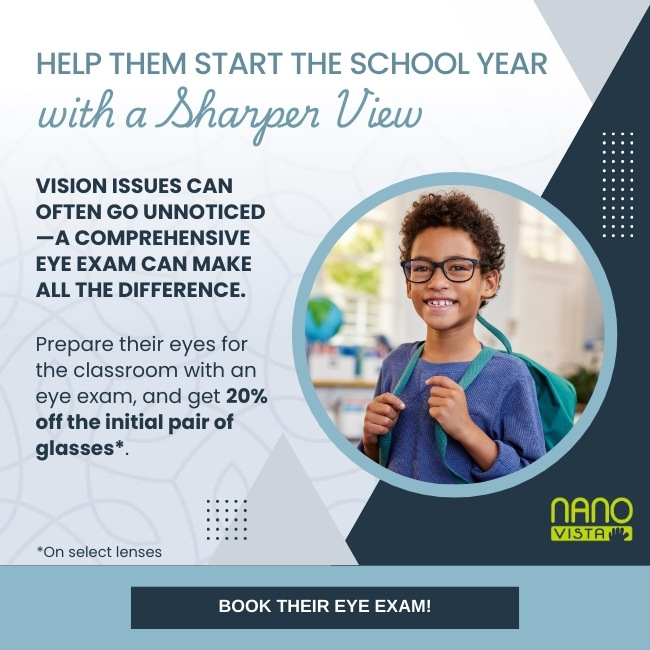Eye doctors have been correcting vision since the early 1200s! Using blown glass and animal horns has evolved into eyeglasses and contact lenses. Nearsightedness is one of the most common vision conditions and can often be corrected with the right treatment.
If you can see things that are close quite clearly, but far away things are blurry, you might be nearsighted. “Fixing” this condition comes down to what you consider a fix. The eye condition can’t be cured, but it can be treated effectively.
Today’s optometry offers a few solutions for correcting a variety of vision problems. Nearsightedness is a problem that can usually be resolved by wearing glasses or contact lenses or receiving eye surgery.
The first step to fixing nearsightedness is getting a current evaluation of your vision during an eye exam. Your optometrist can recommend solutions from there.
What is Nearsightedness?
Nearsightedness is an eye condition that makes it difficult for your eyes to focus on things that are far away. Also known as myopia, this condition is quite common, affecting about 30% of Canadians.
Myopia is a refractive error, which means light does not focus on the retina normally. This is due to an abnormal shape of the eye. Nearsighted people have eyes that are too elongated front to back or have corneas with too much curvature.
Natural 20/20 vision is predicated on precise calibrations in your eye. As light enters your eye, myopia causes it to bend (or refract) irregularly, which affects how light focuses on the retina. This error makes far-away images seem blurry.
Symptoms of Myopia
Generally, the symptoms of nearsightedness include difficulty seeing things that are far away. The severity of your myopia determines what distance objects become blurry.
Tasks like driving or seeing a chalkboard from the back of the classroom are probably difficult. But for some, images become unclear from even a few centimetres away.
Aside from blurred or fuzzy vision, some symptoms of myopia include:
- Headaches
- Eyes that hurt or feel tired
- Squinting
When you’re struggling to see things that those around you can easily focus on, it’s the first clue. If you’re squinting or straining to see things within a few meters there’s a good chance you have some degree of myopia. A comprehensive eye exam with an optometrist can confirm nearsightedness.

Correcting Nearsightedness
If seeing clearly is the goal, your nearsightedness can be fixed. This may require wearing prescription eyewear. But being able to see clearly at a distance is very realistic for most patients. Some nearsighted people may even experience 20/20 vision with correction.
Eyeglasses
The oldest and least invasive form of vision correction is with eyeglasses. Glasses can fix a variety of refractive errors besides myopia, like farsightedness (hyperopia) and astigmatism. Glasses bend light just before it enters your eye to counteract the irregularities in your eye’s surface. This properly focuses light on your retina.
The process is pretty straightforward if myopia is the only condition affecting your vision:
- Get a comprehensive eye exam to determine your precise prescription.
- Find the frames you like and have lenses made for them.
- Put on your glasses and fix your nearsightedness!
People with very severe nearsightedness may have some limitations on the types of glasses they can wear. The more irregular the curvature of your eye, the more this must be compensated with prescription lenses. But newer manufacturing technology has made it possible to fit most frames with reasonably thin lenses.
Contact Lenses
Contact lenses became a mainstream solution for nearsightedness over the last 50 years. These small discs operate under the same principles as glasses but are made of plastic and placed directly on the eyeball. Contact lenses can also correct a variety of vision problems by refracting light into the correct position in your eye.
When used appropriately, contacts can keep everything you see in focus without obstruction and with virtually zero lifestyle changes. Only the most extreme cases of nearsightedness cannot be corrected with contacts. Contact lenses come in different wearable formats (daily, weekly, monthly) and offer a selection of options including:
- Soft Contact Lenses
- Rigid Gas Permeable (RGP) Contact Lenses
- Extended Wear Contact Lenses
- Disposable (Replacement Schedule) Contact Lenses
- Orthokeratology (Ortho-K)
- Decorative Contact Lenses
Deciding to wear contact lenses is a decision that should always be made with your optometrist. Specialty contact lens exams and fittings are necessary, as your contact prescription can differ from that of your spectacles.
Laser Eye Surgery
Another option for fixing nearsightedness is laser eye surgery. Laser eye surgery is a more involved process than wearing glasses or contacts. Multiple factors will determine if this option is right for you. Undergoing corrective eye surgery is a choice that you should always make after consultation with your eye doctor.
Laser refractive surgery is a very safe, reliable procedure that has been used in eye care for many decades. To summarize what happens, a surgeon reshapes your cornea and eyes surface with a tiny laser so that light will be refracted correctly. They may also remove tissue at the front of the eye. This allows you to focus properly on distant objects.
There are several types of laser surgery techniques that can correct nearsightedness. The best choice depends on the health of your eyes and what correction is necessary. Current procedures include:
- LASIK (laser-assisted in situ keratomileusis). A flap is cut in your cornea to allow a computer-guided laser to reshape the underlying tissue. Immediate vision improvement is typical.
- Wavefront-guided LASIK. After computer mapping of your eye’s surface, the surgeon reshapes your eye with a bladeless laser to change the way the cornea reflects light.
- PRK (photorefractive keratectomy). An entire layer of the cornea is removed and a laser removes and reshapes tissue underneath (no flap). Vision improvements are expected within 2 weeks.
Keep Your Sights on an Annual Exam
Optometrists can correct nearsightedness in a variety of ways. Eyeglasses are an uncomplicated solution. Corrective contact lenses are available for almost anyone. And laser eye surgery has become an option with quick results and painless procedures. Fixing myopia is most dependent on an accurate diagnosis. Myopia is a hereditary condition that can’t be prevented, but it can be fixed. Receiving eye exams regularly is what will make sure you are seeing clearly into the distance.




